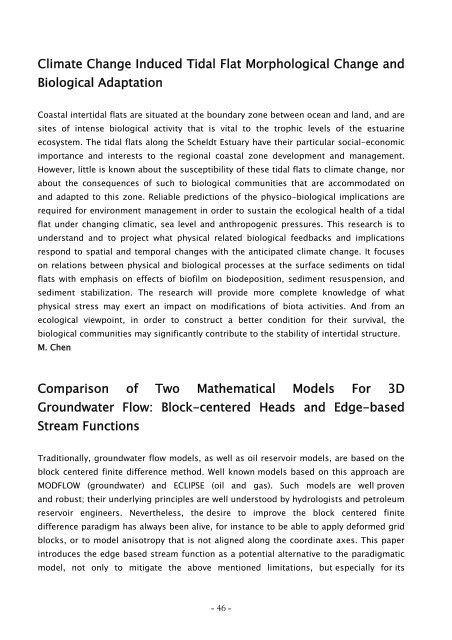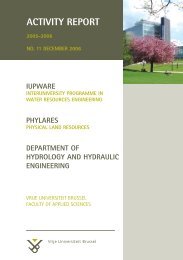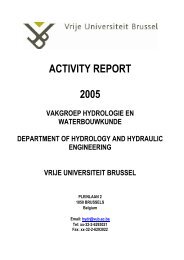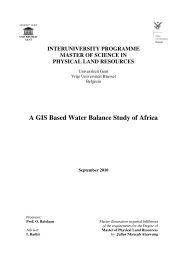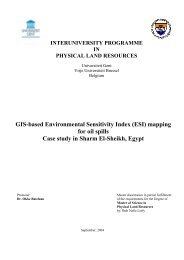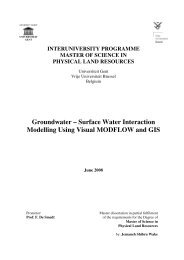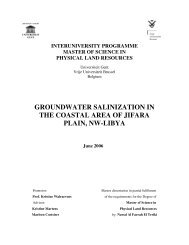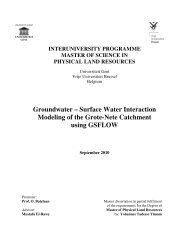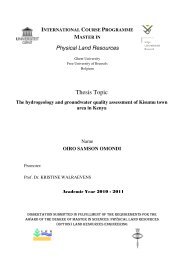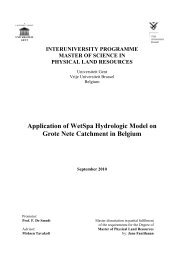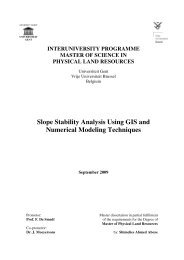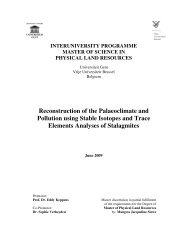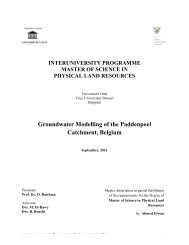C O N T E N T S - Physical Land Resources - Vrije Universiteit Brussel
C O N T E N T S - Physical Land Resources - Vrije Universiteit Brussel
C O N T E N T S - Physical Land Resources - Vrije Universiteit Brussel
You also want an ePaper? Increase the reach of your titles
YUMPU automatically turns print PDFs into web optimized ePapers that Google loves.
Climate Change Induced Tidal Flat Morphological Change andBiological AdaptationCoastal intertidal flats are situated at the boundary zone between ocean and land, and aresites of intense biological activity that is vital to the trophic levels of the estuarineecosystem. The tidal flats along the Scheldt Estuary have their particular social-economicimportance and interests to the regional coastal zone development and management.However, little is known about the susceptibility of these tidal flats to climate change, norabout the consequences of such to biological communities that are accommodated onand adapted to this zone. Reliable predictions of the physico-biological implications arerequired for environment management in order to sustain the ecological health of a tidalflat under changing climatic, sea level and anthropogenic pressures. This research is tounderstand and to project what physical related biological feedbacks and implicationsrespond to spatial and temporal changes with the anticipated climate change. It focuseson relations between physical and biological processes at the surface sediments on tidalflats with emphasis on effects of biofilm on biodeposition, sediment resuspension, andsediment stabilization. The research will provide more complete knowledge of whatphysical stress may exert an impact on modifications of biota activities. And from anecological viewpoint, in order to construct a better condition for their survival, thebiological communities may significantly contribute to the stability of intertidal structure.M. ChenComparison of Two Mathematical Models For 3DGroundwater Flow: Block-centered Heads and Edge-basedStream FunctionsTraditionally, groundwater flow models, as well as oil reservoir models, are based on theblock centered finite difference method. Well known models based on this approach areMODFLOW (groundwater) and ECLIPSE (oil and gas). Such models are well provenand robust; their underlying principles are well understood by hydrologists and petroleumreservoir engineers. Nevertheless, the desire to improve the block centered finitedifference paradigm has always been alive, for instance to be able to apply deformed gridblocks, or to model anisotropy that is not aligned along the coordinate axes. This paperintroduces the edge based stream function as a potential alternative to the paradigmaticmodel, not only to mitigate the above mentioned limitations, but especially for its- 46 -


